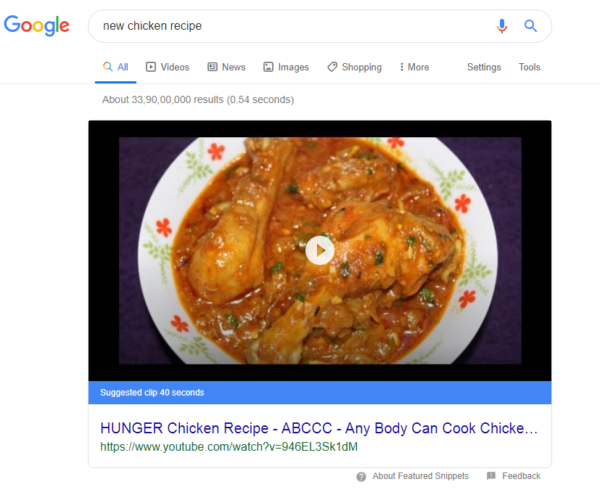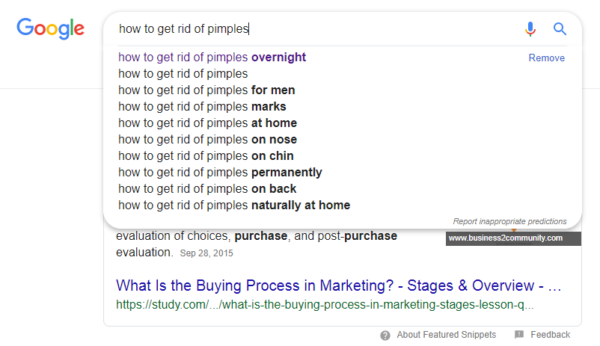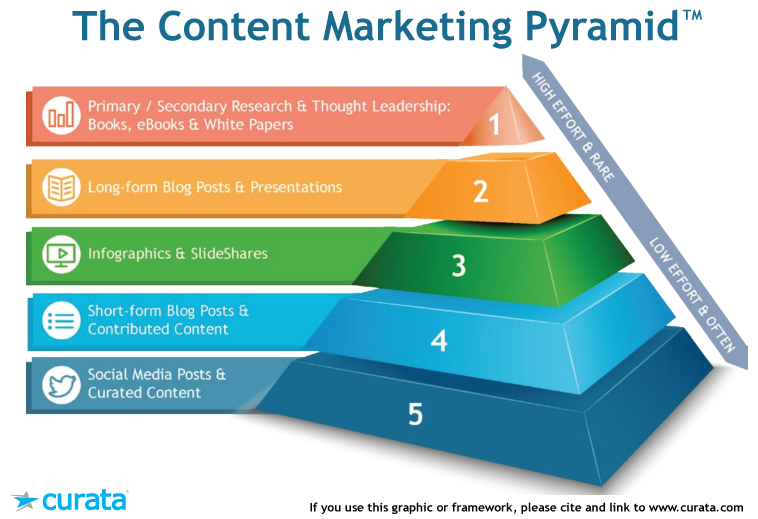Back in 1996, Bill Gates surprised the whole world with his opinion about which online industries will flourish in the future and why.
He predicted the companies providing a wealth of information and entertainment will gain traction.
In 2019, where content is ruling search engines, social media, and online businesses, Bill Gates’ prophecy proved 100% true.
“So what, content is king. Everybody knows that. And all online businesses produce content for brand awareness, customer acquisition, and thought leadership.”
Right?
Tell me then why online businesses are still struggling to catch users’ attention if they are consistent content producers?
I will tell you why…
Imagine a user searching for a “new chicken recipe.” Google quickly shows them three hundred thirty-nine million results in just 0.54 seconds. If your content is focused only on “chicken recipes,” how will you stand out among 900 million results? However, if your content is about “crockpot chicken recipes” or “Hunger chicken recipes,” it has a better chance of appearing on Google’s first page and attracting more users right away.
Of course, almost all online businesses are taking part in the content race. Authors publish over 2 Million blog posts on a daily basis. And this is not going to stop. On the contrary, the content size will increase in different forms including blogs, videos, images, podcasts, etc.
To win the race, brands create specific content for the targeted audience which clears their way to branding, awareness, and conversion. The strategy is popularly known as content marketing. It helps brands to create the right content for the right audience.
With over 500 million blogs exist in web world (and still growing), only a few paved their way to users mind like a brand. Not only because of the content but because of content marketing.
A Brief on Content Marketing
Content Marketing is a strategic method of creating and delivering highly-valuable and relevant content to a specific audience which leads to brand awareness and conversion.
- Content Marketing will grow beyond 16% by 2021 (Technavio)
- 89% of B2B Marketers consider content marketing as a crucial part of their strategies (CMI)
“Content Marketing is the Only Marketing Left”
Content Marketing in itself is a lead generation tool but only when you know how to use it as per the changing users’ demands and trends.
Maybe you have already implemented content marketing to give your content a right direction. But you wouldn’t be here if you were generating desired marketing results.
Through this step-by-step guide on creating a Master Content Marketing Plan, you will learn the proper way to implement content marketing mingled with custom content on users’ demand
“If you Fail to Plan, You Plan to Fail”
Benjamin Franklin
As I mentioned before, the main reason companies struggle with content marketing is that they create random content, which only reaches random users. A content marketing strategy stops this random creation and provides a clear plan to follow. It helps you make the right content for the right audience at the right time using the right platform.
Wanna know how?
Let’s discuss it in detail:
Step 1. First Build a Buyer Persona
A buyer persona is creating a fictional representation of your targeted audience based on research and real data of existing customers.
Understanding buyer persona guides you throughout your content creation journey. It tells you which content to create for ideal customers. This, in turn, let’s you carve out an effective content creation strategy.
So how will you build a persona?
Collecting and analyzing customers’ demographics, goals, motivation to buy product, behaviour patterns, industry, interest, age, etc.help you create a perfect image of your potential customers.
Step 2. Outline the Buying Process
Once you know your customers, take another step and visualize their buying process.
Buyers generally pass through 3 stages before buying the products or services:
- First, they don’t know anything about your products or services
- Second, they look for your products or services
- Third, they are ready to buy products or services
Image Source: MarketingExperiments
You have to create content for each stage as users pass through different stages.
Let’s take an example of beauty products and how to create content as per 3 stage buying process.
At first stage, you create awareness content to plant the seeds in users mind. To tell them that they have a problem and you have a solution. E.g., Overnight solution to get rid of pimples.
At the second stage, you create competitive content telling users why you are the best fit to sort out their issues. Attach a call-to-action along with your content to give users easy access. E.g., how ingredients in beauty products are effective for stubborn pimples. Plus, where to avail the product (call to action).
At last, promotion content gives a quick boost to already made-up-to-buy mind of users. Discounts, quick-list benefits, customer reviews, etc., are the best fit here.
Plan your content creation process as per the buyer’s persona and buying process.
Step 3. Note Down Keywords
How will you make sure that your content reaches to the targeted audience? Keywords play an important role here. Inserting keywords makes certain that your content comes up each time users put relevant words in Google search.
Let’s take a beauty example further.
A pimple-prone will type “how to get rid of pimples overnight”. These and several others are your keywords like vanish pimples overnight, homemade solution for pimples, get rid of pimples at home, etc.
Google keyword planner helps you find out brand relevant keywords. Or you can manually type in Google to notice prevailing keywords.
Copycat your competitors’ keywords too.
Save them all in Google sheet because you have to use them with the content creation process.
Step 4. Create a Content Editorial Calendar
By now, you know who your users are, what content to create as per buying process, and which keywords to focus on. It’s time to build an editorial calendar to remain strategically focused on what to create, when to create, when to publish, and where to publish. This saves you from falling down in a random arena where companies create content just any time and publish anywhere. Also, it helps you create content consistently.
Softwares like Trello and Google Sheets are effective tools to create Editorial Calendar. Just remember to clarify what content to create, who will create it, deadline, and where to submit.
Here’s Buffer’s Content Editorial Example on Trello:
Image Source: HubSpot
Tip: Put someone in charge to take care of the whole process.
Step 5. Follow a Content Distribution Strategy
Don’t think your content is limited to website and blogs only. That was ages ago. Now content is much more than blog and website only. Content is the world of blogs, videos, podcasts, images, and god knows what. And content distribution platforms are home of social media platforms, YouTube, iTunes Podcast, and wherever your audience resides. Add link building and influencer marketing as well for wider reach.
You have to be omnipresence to spread your brand like word-of-mouth. For that, you need a content distribution strategy where you turn (or break) a long-form article in other forms of content. And promote them on different social channels.
It’s Gary Vee’s popular strategy.
Curata, a content curation and marketing platform, explains it well with a Content Marketing Pyramid:
Image Source: Curata
Again, take the help of your content editorial calendar – assign tasks with deadlines.
Bingo!
You are set to work long with this content strategy. No more wastage, no random content. In fact, you are ready to turn your company into a brand.
But how will you know where have you reached. Obviously, you need results to keep going and adopt flexible strategies as per the need of the moment.
Analyzing end-results will give a helping hand here.
Step 6. Measure Your Progress
Counting likes, shares, and comments are important, but not enough attributes to measure your progress. Conversion is what you want along with knowing how much your branding is in effect. Here, you need the help of tools to give you thorough insights on where your brand stands and where do you need to go.
Let me give you 3 tools to know it all.
- Google Analytics: It measures content performance, engagement, and identifies the sources from where traffic come.
- Ahrefs: It is known as overall SEO package tool, giving insights on everything ranging from keywords to content suggestions to backlinks.
- Mention: It helps you track brand mentions using which you can be available for users in any corner of the world.
Time to Adapt
All in all, generate targeted content influenced with buyer persona and buying process. Hone your content marketing strategy with measurement. Collect and follow what works while throwing out what doesn’t. Keep your strategies updated with the trends and get rid of outdated strategies as soon as possible.




